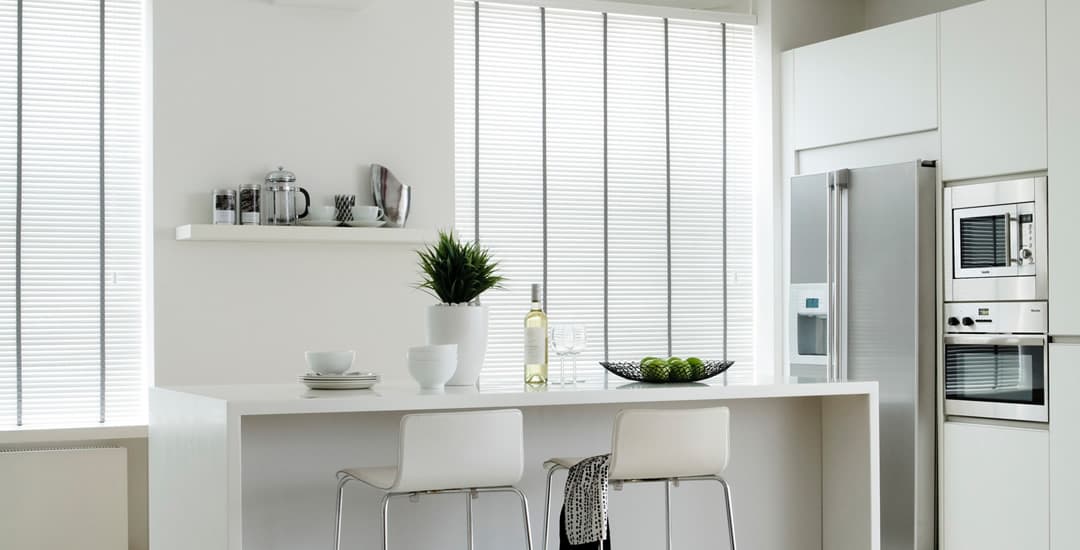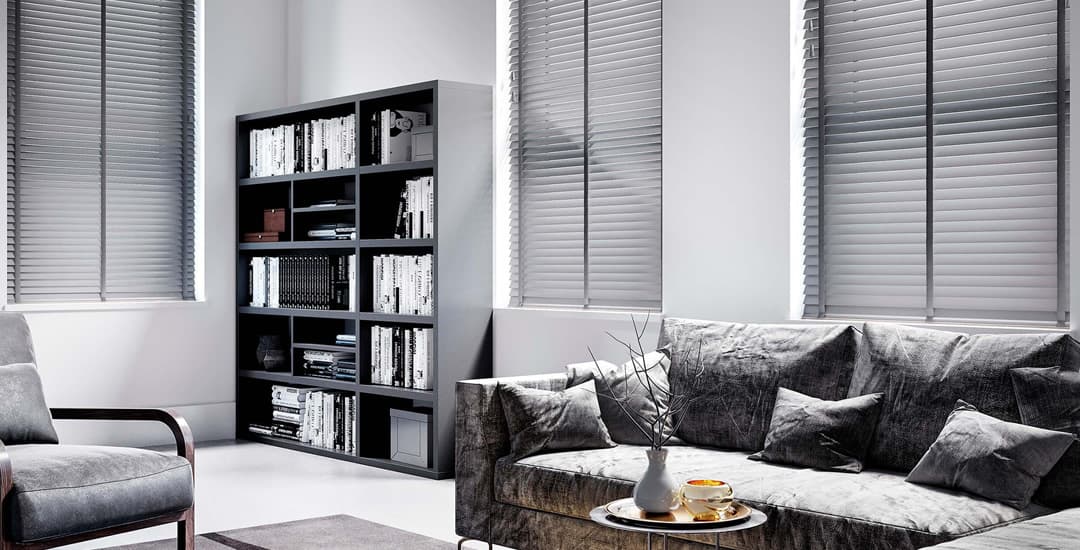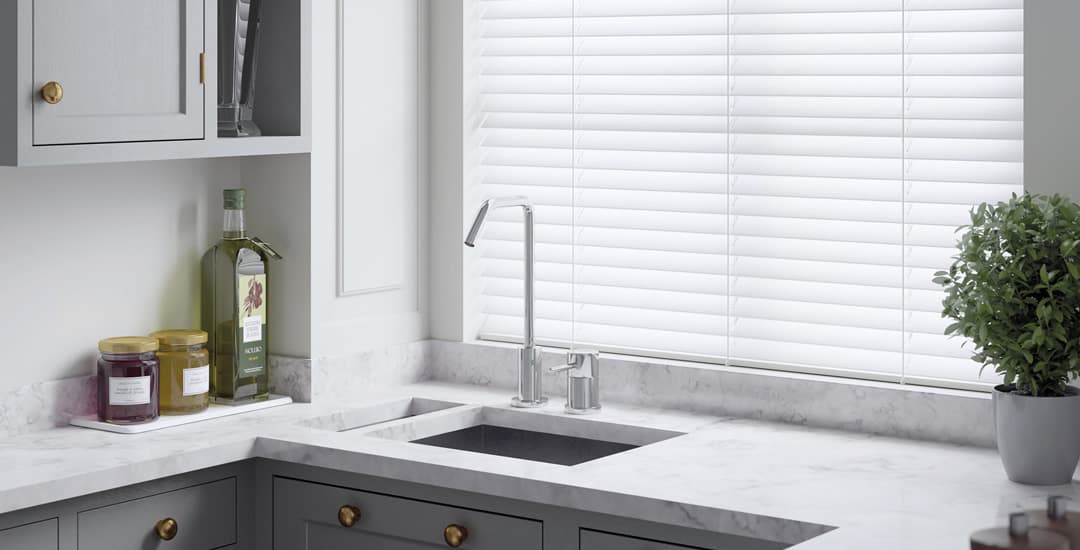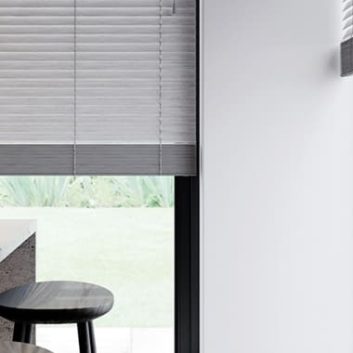
Are real wood blinds better than faux-wood blinds? Define “better” and I will define your answer! There are lots of potential meanings of “better” in this context, such as better quality, better functioning, better insulating, better looking and so on.
Are wooden blinds better than plastic? (or PVC to be precise, which is what our faux-wood blinds are made of.) This also depends to a degree on application as well. There are some scenarios and environments that a faux-wood blind would be great for, but that a real wood blind might not cope with, so there’s a lot going on here.
This blog post will look at the various different facets of which is better, faux wood or real wood blinds, and try to offer unambiguous answers for most common scenarios and points of comparison.
Are wooden blinds better quality than faux wood blinds?
To an extent, this depends on where you get them from and their general quality benchmarks. For both real wood and faux-wood blinds, made-to-measure are going to be higher quality than readymade mass-produced alternatives.
Cheap faux-wood blinds might therefore look and feel a bit plasticky, while their made-to-measure counterparts will generally pass for real wood at a glance, and neither look nor feel cheap.
That said, side by side with a real wood blind, you could almost certainly tell the difference if you looked closely.
It’s hard to make a meaningful comparison on quality like for like when you’re talking about two very different materials like PVC and real wood. Properly cared for (which really just means cleaning them now and then and not being overly rough with them in operation) both real wood and faux-wood blinds from a reputable seller should look good and operate smoothly for many years.
Do real wood blinds look better than faux wood blinds?

If your goal is to achieve a genuinely natural look and feel and perhaps to blend seamlessly with other woods and natural or organic materials and textures in a room, it would have to be real wood blinds. They have an almost intangible warmth and depth to them that is virtually impossible to emulate in manmade materials.
Faux wood blinds are made using robust, waterproof PVC, which results in a uniformly consistent finish to each slat, but lacks the natural graining and “flaws” that are a feature of real wood. This means that each individual slat of a real wood blind will have subtle deviations from its neighbours.
However, this will only really be noticeable on stained, soft-grained wooden blinds rather than painted ones.
Are wooden blinds better than plastic in terms of handing wear and tear? Probably not.
To an extent, you might expect faux wood blinds to be slower at showing signs of wear and tear than a natural material like wood; and if exposed to moisture or humidity on the regular, faux-wood blinds will definitely be more forgiving of this than real wood blinds.
On the flipside, real wood blinds do have a more commanding presence and tend to look more luxurious and prestigious than faux-wood blinds.
Are real wood blinds better for the environment than faux wood blinds?
Real wood blinds crafted from wood that is ethically grown and sustainably felled and managed are eco-friendly, and have excellent eco-credentials. Our real wood blinds are made from basswood, sourced from managed plantations that do not contribute to deforestation or habitat destruction.
Bear in mind we can only speak on our own wooden blinds here, and you should check individually if you’re exploring other retailers, particularly when it comes to readymade wooden blinds at the lower end of the price spectrum.
Faux-wood blinds are made of PVC, a type of plastic, and the manufacturing processes used to produce this (and the fact that PVC is not biodegradable) do objectively mean that faux-wood blinds are not as environmentally sound as real wood blinds.
That said, PVC blinds can be recycled, and so there is no need for them to end up in landfill after they’ve reached the end of their natural lifespan.
For energy efficiency, which is better? Faux wood or real wood blinds?
Wood is a natural insulator and provides excellent protection from solar gain and UV, as well as helping to keep the heat inside of your home in winter.
Faux wood blinds also provide a high level of insulation, however, so there’s not really much difference to note in terms of insulation and energy efficiency.
Are real wood blinds better than faux wood blinds in terms of operation?
Both real wood and faux-wood blinds are a type of Venetian blind, and they work in exactly the same way.
The only potential difference here is that faux-wood blinds tend to be a little heavier than real wood blinds, which is only strictly relevant for very large blinds, as this can mean you need to put a little more effort into raising them.
Which type is easier to clean?

Faux-wood PVC blinds are waterproof (and fire retardant, FYI) which means that you can go a bit madder when it comes to cleaning them, and you can wash them down if needed to remove grease and grime.
Real wood blinds shouldn’t have too much to do with water, as the slats will potentially absorb it and may warp and swell.
Cleaning real wood blinds is of course do-able, but you’d need to use a damp cloth rather than slinging buckets of water about, and try to keep them as dry as possible.
Generally though, a quick going over with a duster will be perfectly sufficient for both types of blinds and you’ll rarely need to think about anything more intensive.
Should I choose real wood or faux wood blinds?
If only an authentic natural material with the eco-credentials to match will tick the right boxes for you, it has to be real wood.
But for use in a smaller kitchen or bathroom that tends to be humid or that condensates a lot, you’d really need to come down in favour of faux wood blinds, because real wood blinds don’t like too much moisture, as outlined above.
Aside from taking into account the factors I’ve mentioned above, you’re largely looking at a case of being left to your own personal choice here; oh one more thing to bear in mind too though is that real wood blinds tend to be more expensive than faux-wood.
Which are better: Faux wood blinds or real wood blinds?
To tie off then, let’s run a quick comparison of various different pros and cons for wooden and faux-wood blinds.
| Real Wood Blinds | Faux Wood Blinds |
| Visually, real wood blinds appear more luxurious and expensive. | Designed to emulate real wood but ultimately, they do look and feel slightly different. |
| They have their own “personality” due to the unique characteristics of the natural wood. | Each slat has a very uniform appearance, which mimics wood effect but without the natural inconsistencies of an organic product. |
| Reasonably lightweight and so smooth in operation. | Larger faux-wood blinds can be a little heavy to operate. |
| Not well suited to humid rooms, or windows that condensate heavily. | Faux-wood blinds are waterproof and so perfectly fine to use in damp or humid environments. |
| Can be expensive, particularly in larger sizes. | Faux-wood blinds are less costly than real wood blinds. |
| Real wood blinds should last for many years with proper care, but as a natural product, they’re more vulnerable to wear and tear over time. | Faux-wood blinds are extremely robust and virtually indestructible. |
| Require cleaning with care to avoid getting them overly wet. | Can be washed off with water perfectly safely. |
| Wooden blinds meet all the necessary fire safety standards, but by nature will not be as fire-resistant as PVC faux wood. | Highly fire retardant. |
| Real wooden blind slats are quite finely constructed, and so create a compact stack when fully raised. | Faux wood blind slats are a little wider, meaning that they take up a little more space within the window when raised. |
| Able to withstand a wide range of temperature fluctuations. | May bend and deform if consistently exposed to temperatures of around 55 degrees Celsius or above, and so may be unsuited to windows close to open fires, radiators or other direct sources of high heat. |
Both real wood blinds and faux wood blinds offer a high level of thermal efficiency, a range of options to personalise the colour, finish, slat width, and tape or cord choice, and can be made in both wide and long sizes for large or tall windows.
Are real wood blinds better than faux wood blinds? Tell me your thoughts in the comments!




